= Adromischus marianae f. herrei (W.F.Barker) Pilbeam
Natl. Cact. Succ. J. 36(2): 34 (1981)
Accepted Scientific Name: Adromischus marianae var. immaculatus Uitewaal
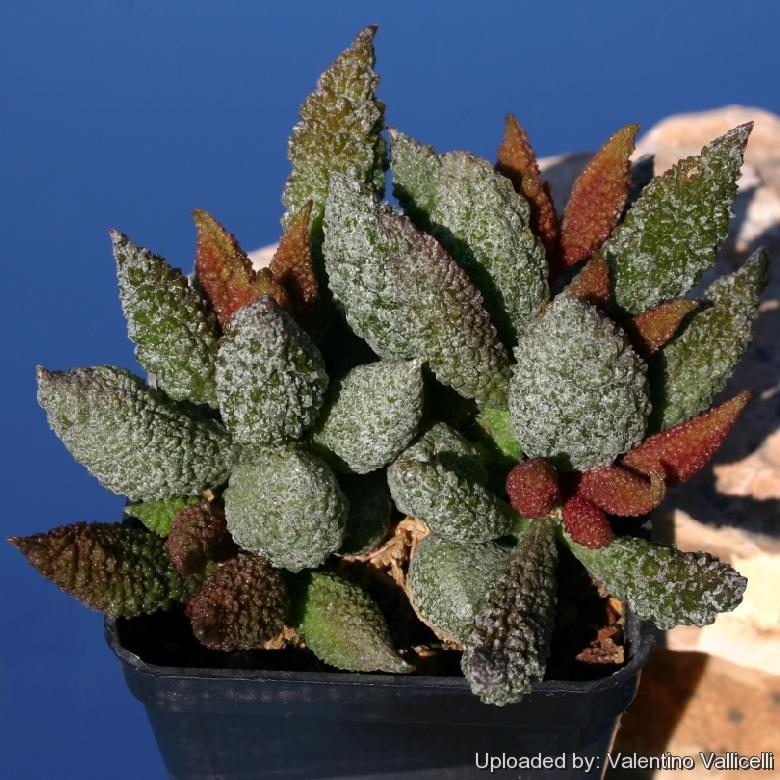
Adromischus herrei
This plant is extraordinary in appearance and among the most notable species of the genus and well worth cultivating. It forms a cluster of distinctive leaves that are rough and warty on the surface.
Origin and Habitat: South Africa (Little Namaqualand). Grows often filling up cracks on granite hills.
Synonyms:
See all synonyms of Adromischus marianae
Description: Adromischus marianae f. herrei is a small slow-growing succulent shrub constricted at the base, variable in size up to up to10 cm tall with many thin and very short branches. It is now believed to be merely a red-brown population of Adromischus marianiae with very rough leaves that looks like dried raisins. This species is variable and every clone is distinct and worth to grow more than one sample.
Stem: Short, erect, tapering, basally tuberose.
Roots: Tuberose.
Leaves: Green to reddish-brown or purple (depending on clones, growing conditions and seasons), unspotted, becoming grey and waxy as they ages, petiolate, short, almost spherical to elongate lanceolate or oblanceolate, tapered at both ends and roundish in cross section or slightly concave above, 1,5 to 3,5 cm long, very irregularly warty (tubercled) and slightly caniculate (grooved) in the upper part. Margins absent or brownish or white, raised and more or less horny especially near the tip.
Flowers: Green with pinkish-red tinge about 12 mm long.
Subspecies, varieties, forms and cultivars of plants belonging to the Adromischus marianae group
- Adromischus geyeri Hutchison: has terete, chalky, mottled reddish-brown, grey-green leaves with a rounded tip. The horny margin is often not visible at the tip. Distribution: South Namibia. Diamond Area No.1.
 Adromischus marianae (Marloth) A.Berger: (var. marianiae) has grey to reddish darker markings along the leaves. It has the longest margin along the top edge of each leaf of any other variety. Distribution: Cederberg around Clanwilliam.
Adromischus marianae (Marloth) A.Berger: (var. marianiae) has grey to reddish darker markings along the leaves. It has the longest margin along the top edge of each leaf of any other variety. Distribution: Cederberg around Clanwilliam. Adromischus marianae f. alveolatus (Hutchison) Pilbeam: similar to f. herrei but with leaves which are shorter less acute, generally more robust, and with a very rough surface. Distribution: north of Concordia.
Adromischus marianae f. alveolatus (Hutchison) Pilbeam: similar to f. herrei but with leaves which are shorter less acute, generally more robust, and with a very rough surface. Distribution: north of Concordia.- Adromischus marianae var. antidorcatum (Poelln.) Pilbeam: has a a rough leaf surface similar to A. marianiae "immaculatus". Includes forms with short leaves. it is very variable. Distribution: Namaqualand, West. & South Bushmanland.
 Adromischus marianae var. hallii (Hutchison) Toelken: has the broadest, thickest leaves within the A. marianiae complex. Leaves are chalky, grey-green but red spotted forms have been found. Distribution: South Namibia, North & West Bushmanland.
Adromischus marianae var. hallii (Hutchison) Toelken: has the broadest, thickest leaves within the A. marianiae complex. Leaves are chalky, grey-green but red spotted forms have been found. Distribution: South Namibia, North & West Bushmanland. Adromischus marianae f. herrei (W.F.Barker) Pilbeam: has the roughest leaves and can resemble dried raisins! It is a small plant, characterised by petiolate leaves, thin stems and thin inflorescences. Distribution: Namaqualand coastal mountains.
Adromischus marianae f. herrei (W.F.Barker) Pilbeam: has the roughest leaves and can resemble dried raisins! It is a small plant, characterised by petiolate leaves, thin stems and thin inflorescences. Distribution: Namaqualand coastal mountains. Adromischus marianae var. immaculatus Uitewaal: has cylindrical leaves, but with great variation in marking and texture. It usually has slighly rough leaves. Distribution: South Namaqualand, Knersvlakte.
Adromischus marianae var. immaculatus Uitewaal: has cylindrical leaves, but with great variation in marking and texture. It usually has slighly rough leaves. Distribution: South Namaqualand, Knersvlakte. Adromischus marianae var. kubusensis (Uitewaal) Toelken: Very variable in leaf shape: the plain, grey-green leaves vary from long-cylindrical to short-fat. Distribution: Richtersveld mountains.
Adromischus marianae var. kubusensis (Uitewaal) Toelken: Very variable in leaf shape: the plain, grey-green leaves vary from long-cylindrical to short-fat. Distribution: Richtersveld mountains. Adromischus marianae cv. Little Spheroid: has superb and very peculiar round leaves. Distribution: Namaqualand, Northern Cape, South Africa.
Adromischus marianae cv. Little Spheroid: has superb and very peculiar round leaves. Distribution: Namaqualand, Northern Cape, South Africa.
Bibliography: Major references and further lectures
1) Urs Eggli “Illustrated Handbook of Succulent Plants: Crassulaceae” Springer for Science, 01/gen/2003
2) Werner Rauh “Die großartige Welt der Sukkulenten : Anzucht und Kultur sukkulenter Pflanzen mit Ausnahme der Kakteen” Hamburg ; Berlin : P. Parey, cop. 1967
3) D. J. Court “Succulent Flora of Southern Africa” A.A. Balkema, 1981
4) James Cullen, Sabina G. Knees, H. Suzanne Cubey “The European Garden Flora Flowering Plants: A Manual for the Identification of Plants Cultivated in Europe, Both Out-of-Doors and Under Glass” Cambridge University Press, 11/ago/2011
5) J.P. Roux “Flora of South Africa“ 2003
6) Domitilla Raimondo “Red list of South African plants 2009” South African National Biodiversity Institute, 2009
7) Ernst Van Jaarsveld, Ben-Erik Van Wyk, Gideon Smith “Succulents of South Africa: A Guide to the Regional Diversity” Tafelberg Publishers, Limited, 01/lug/2000
8) Ben P. Barkhuizen “Succulents of Southern Africa: With Specific Reference to the Succulent Families Found in the Republic of South Africa and South West Africa” Purnell, 1978
 Adromischus herrei (Adromischus marianae f. herrei) Photo by: Valentino Vallicelli
Adromischus herrei (Adromischus marianae f. herrei) Photo by: Valentino Vallicelli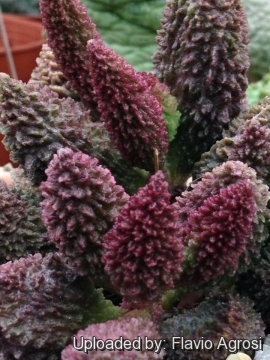 Adromischus herrei (Adromischus marianae f. herrei) Photo by: Flavio Agrosi
Adromischus herrei (Adromischus marianae f. herrei) Photo by: Flavio Agrosi Adromischus herrei (Adromischus marianae f. herrei) Photo by: Giuseppe Distefano
Adromischus herrei (Adromischus marianae f. herrei) Photo by: Giuseppe Distefano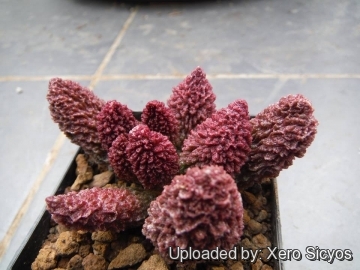 Adromischus herrei (Adromischus marianae f. herrei) Photo by: Xero Sicyos
Adromischus herrei (Adromischus marianae f. herrei) Photo by: Xero Sicyos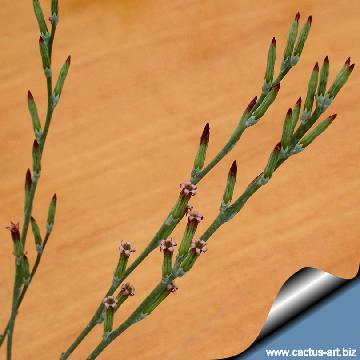 Adromischus herrei (Adromischus marianae f. herrei) Photo by: Cactus Art
Adromischus herrei (Adromischus marianae f. herrei) Photo by: Cactus Art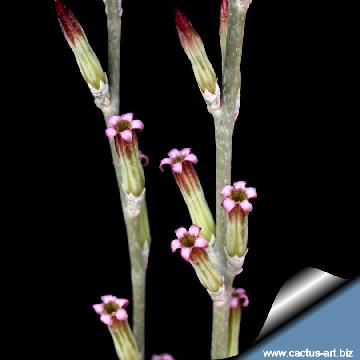 Adromischus herrei (Adromischus marianae f. herrei) Photo by: Cactus Art
Adromischus herrei (Adromischus marianae f. herrei) Photo by: Cactus Art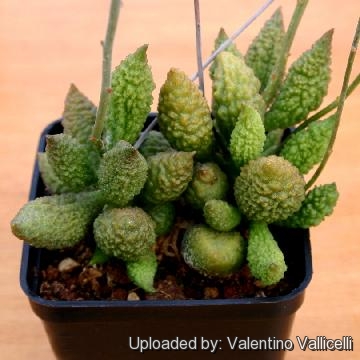 It is worth collecting many forms. (Adromischus marianae f. herrei) Photo by: Valentino Vallicelli
It is worth collecting many forms. (Adromischus marianae f. herrei) Photo by: Valentino Vallicelli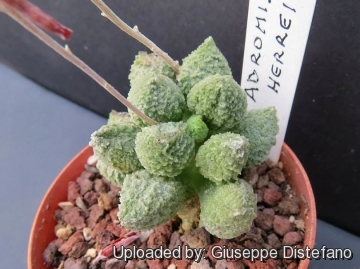 Adromischus herrei (Adromischus marianae f. herrei) Photo by: Giuseppe Distefano
Adromischus herrei (Adromischus marianae f. herrei) Photo by: Giuseppe DistefanoCultivation and Propagation: Adromischus marianaeSN|15181]]SN|15181]] var. herrei is a most beautiful succulent but rarely seen in cultivation. It is not the easiest species to cultivate, and highly prone to rotting off, both at the height of winter or summer.
Growth rate: It is a relatively fast growing species.
Soil: Use mineral well-permeable substratum with very little organic matter (peat, humus).
It needs perfect drainage to flourish.
Repotting: Repotting every 2-3 years. As it is especially prone to rot under-pot in a smaller container filled with very porous compost. Use pot with good drainage. All species of this genus are happy in small pots.
Exposure: It grows best in a partially shaded position. It got sunburned if exposed to midday sun.
Hardiness: Require a minimum temperature 5°C (But hardy down to -7°C for short periods), with good drainage and dryness in winter to resist the cold.
Watering: It takes more water than cacti, but let the soil dry between soaking, in the wild, it receives rain mostly in spring and fall. Must have very dry atmosphere. Water less in winter but do not allow it to shrivel.
Pest & disease: It is vulnerable to mealybugs and rarely scale. It is prone to rotting from the tuberous base or from dried inflorescences. If the plants are not watered and “aired” correctly, fungicides won't help all that much.
Maintenance: As the plant matures, the centre becomes bare. When it does, restart it from side cuttings and throw away the central part. Remove flower spikes before winter.
Propagation: Usually propagate from single leaves (leaf cuttings) or stem cuttings seed propagation is rarely used. Leaves easily root and produce new plants. Twist off a leaf and permit it to dry out a couple of days, lay it on the soil and insert the stem end partially into the soil. The original leaf should not be removed until it has dried up. Try to keep the leaf somewhat upright so that the roots are able to grow downward. If grown in a container, bottom watering by immersing the container is recommended.
Your Photos
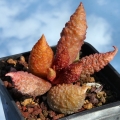
by Valentino Vallicelli
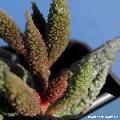
by Cactus Art
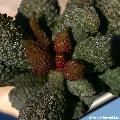
by Cactus Art
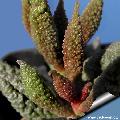
by Cactus Art

by Giuseppe Distefano























